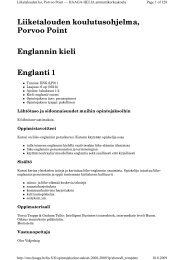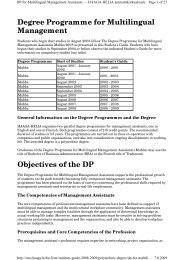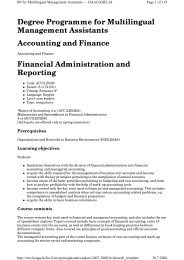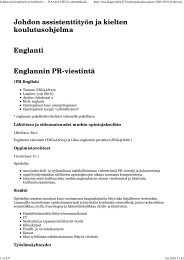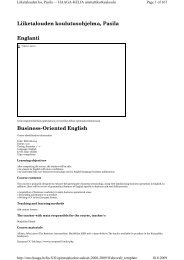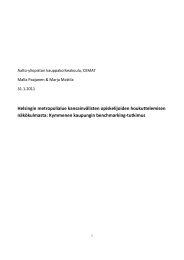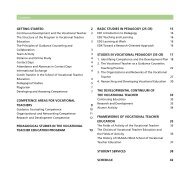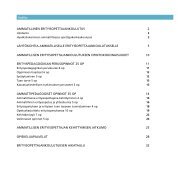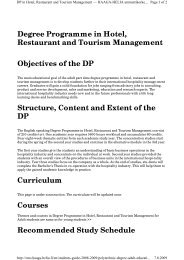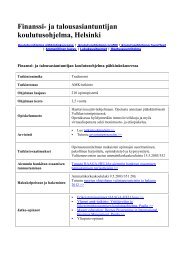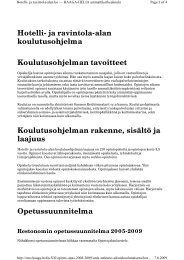Liiketalouden ko, Helsinki - ops 2009 - HAAGA-HELIA ...
Liiketalouden ko, Helsinki - ops 2009 - HAAGA-HELIA ...
Liiketalouden ko, Helsinki - ops 2009 - HAAGA-HELIA ...
You also want an ePaper? Increase the reach of your titles
YUMPU automatically turns print PDFs into web optimized ePapers that Google loves.
Upon completion of the course, the student is able to<br />
<br />
<br />
<br />
<br />
<br />
<br />
understand and describe branding as a strategic tool for business management, leadership<br />
and marketing.<br />
apply problem identification, analysis and solving to branding.<br />
compare brand-related sources and models at an advanced level.<br />
apply branding theories to practical contexts.<br />
combine branding theories and the student’s own ideas to formulate new models.<br />
understand the significance of qualitative research in branding.<br />
Course contents<br />
<br />
<br />
<br />
<br />
<br />
<br />
<br />
Strategic brand analysis<br />
Brand research (qualitative)<br />
Brand identity and brand promise<br />
Brand image<br />
Brand building process and models<br />
Managing the brand identity<br />
Brand communication<br />
Cooperation with the business community<br />
Guest lecturers will visit on the lessons. Writing triggers in cooperation with companies are done.<br />
International dimension<br />
Guest lecturers from international companies will visit on the lessons. There are international<br />
learning materials.<br />
Teaching and learning methods<br />
The learning approach is problem-based learning (PBL), supporting the project work conducted on<br />
the course Branding Project linked to this course. Practical problems in the business contexts are<br />
solved through constructing knowledge in teams. Theoretical knowledge is applied to practice.<br />
Students search for information independently, and the lectures, included in the PBL learning cycle,<br />
support the study. The learners have an active role, taking responsibility for their own learning. The<br />
instructor’s role as the tutor is to facilitate the learning process.<br />
The tutorial teams meet for three hours each week. Lectures and worksh<strong>ops</strong> are given once a week.<br />
The student’s presence, commitment and active participation are necessary in all forms of class<br />
activity. The student should reserve seven to ten hours of personal study time for preparation for<br />
each tutorial. The following estimate of time spent for these activities is referential.<br />
Tutorials 36 h<br />
Lectures and worksh<strong>ops</strong> 34 h<br />
Independent study and teamwork 170 h<br />
Accreditation of prior learning (APL)



